О печуркама, бубама, спорту и кантама за отпатке
This year I promise to be very meager on the expedition: a couple of two-day trips to Transbaikalia, and then, as the card falls. And nature blooms, breathes, lives; beckons to itself with insignificant riddles and big secrets. With the onset of the “green season” outside the window, my performance in the office is sharply reduced. Earlier, at this time, we had already traveled somewhere along the steppes of Mongolia or the Trans-Baikal Territory; we crossed still unsaturated rivers in protected thickets or plowed the smooth surface of lakes on a boat … After such trips it is difficult to sit still on sunny summer days. In order to at least appease his research passion, he decided to put into practice his plans, which he had been hatching for a long time, but still could not realize due to endless trips. I conceived the monitoring of the microflora of our Akademgorodok. Our surroundings are quite forested, and the place is extremely convenient – you can always take a walk here without much damage to your work. In addition to the rather “poppy” drip shoes, such orchid ones grow here (see photo).
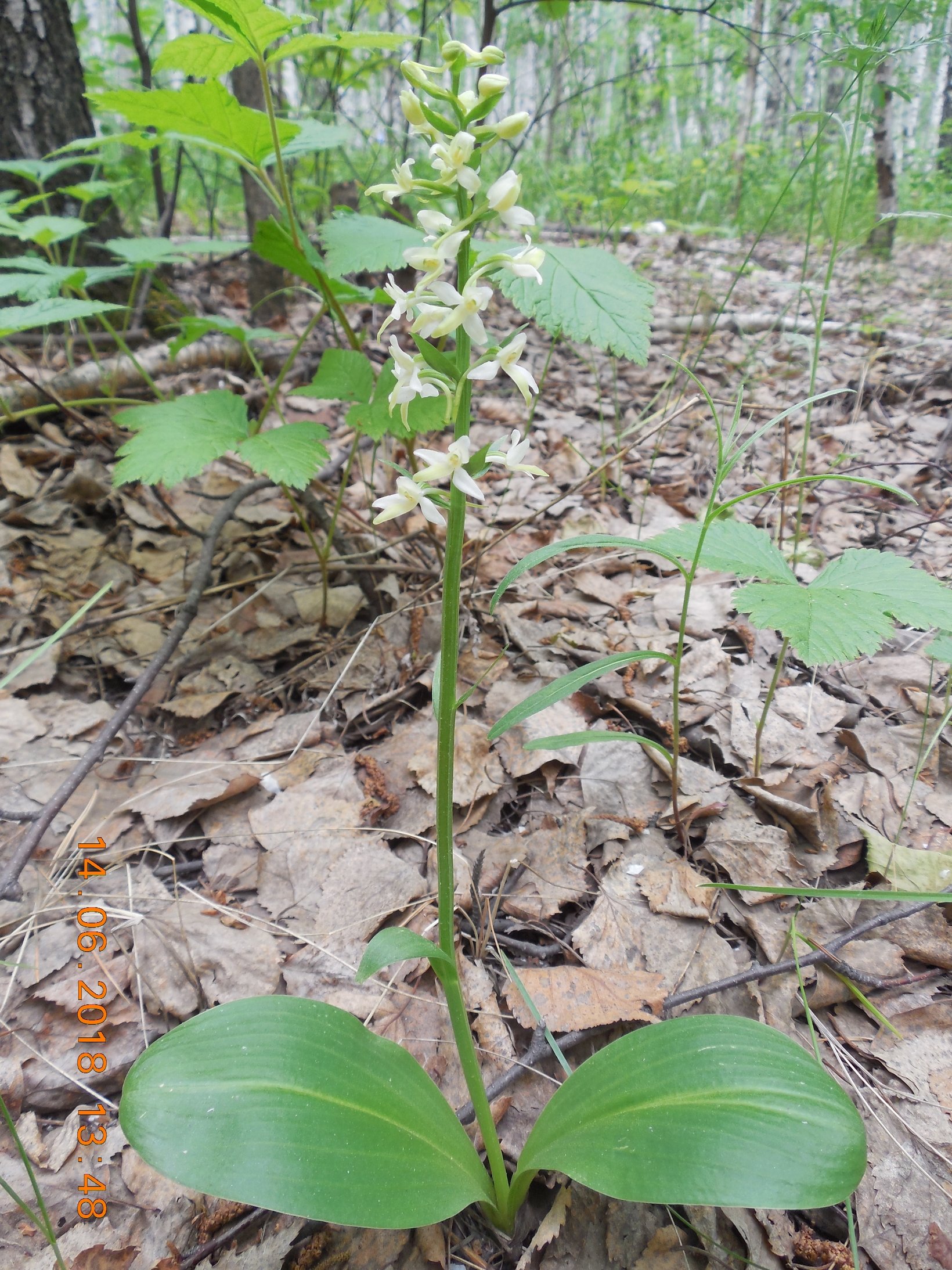
I myself deal with a relatively small group of mycetophilic beetles from the Staphylinidae family – such a hobby. And it is interesting for me to track not just the change in the species composition of fungi over time – I want to see how the species composition of the group of obligate mycetophils I have chosen (tribe Gyrophaenine) changes along with this; what kind of mushrooms do they prefer; are there any preferences at all … I collect mushrooms, suck bugs from them into my hauster; I put the mushrooms in a paper bag – I herbarize; I pour beetles into eppendorfs, sea with ethyl acetate … In general, I shock the people a little. The local runners with passers-by look at me and … run around. Of course: an adult uncle, but sitting in the grass with some kind of “garbage” in his mouth … he is packing a goat in bubbles. Pipettes, jars, test tubes lie around … It seems: “a normal person will not take all this for a walk.” After all, it’s like with us: everyone is “normal” – only in sports or business. Why don’t I run like athletes and businessmen? Because a healthy person does not need sports, but a sick person is contraindicated. Well, it’s not about that.
I started surveying the territory on May 28, I continue to this day and plan to finish it sometime in September, as it turns out. The first to be populated by mushrooms in our Academgorodok were tinder fungi: Fomitopsis pinicola and Fomes fomentarius. Moreover, on the first beetle there are always much more than on the second. This is understandable – the size of the pores of the bordered tinder fungus allows my insects to climb into them. In Fomes fomentarius, the pores are very small and the beetles are forced to feed on the surface from the underside of the fungus (they feed by scraping off spores and basidia). And they, like all living things, certainly have natural enemies, and they must be in serious competition with each other. Mushrooms are a very ephemeral substrate, but beetles need to eat and breed … So whoever had time, he ate it. That is why the competition for the mushroom must be fierce.
I collected rich material from Trametes gibbosa and Daedaliella gr. confragosa; pleased with one tinder fungus, flattened under an aspen log (Datronia mollis): the hat barely protrudes from the edge, and then a continuous fleshy white spot of hymenophore tubes. In such fungi there may be interesting entomological findings.
I also met one prostrate tinder fungus, which grew under the birch bark so that it burst in several places and bristled, exposing the damp, porous, dark brown, like the lungs of a smoker, the body of the fungus.
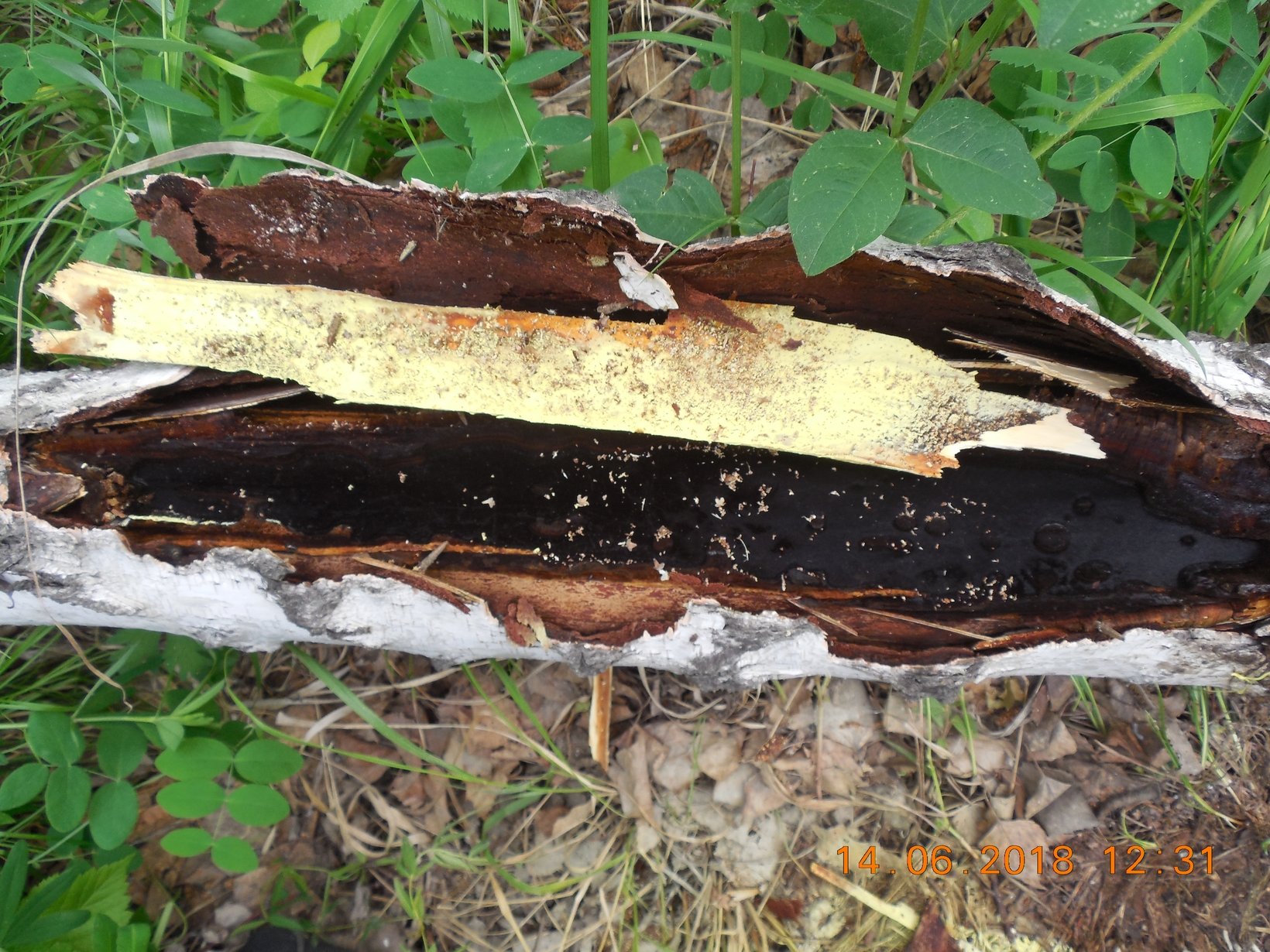
A thick layer of spores was striking (I think they were), as if the dead cambium of a tree was smeared with phosphorus. It seemed to bring such a piece of wood into a dark room – it would give so much light that it would be possible to read a book.
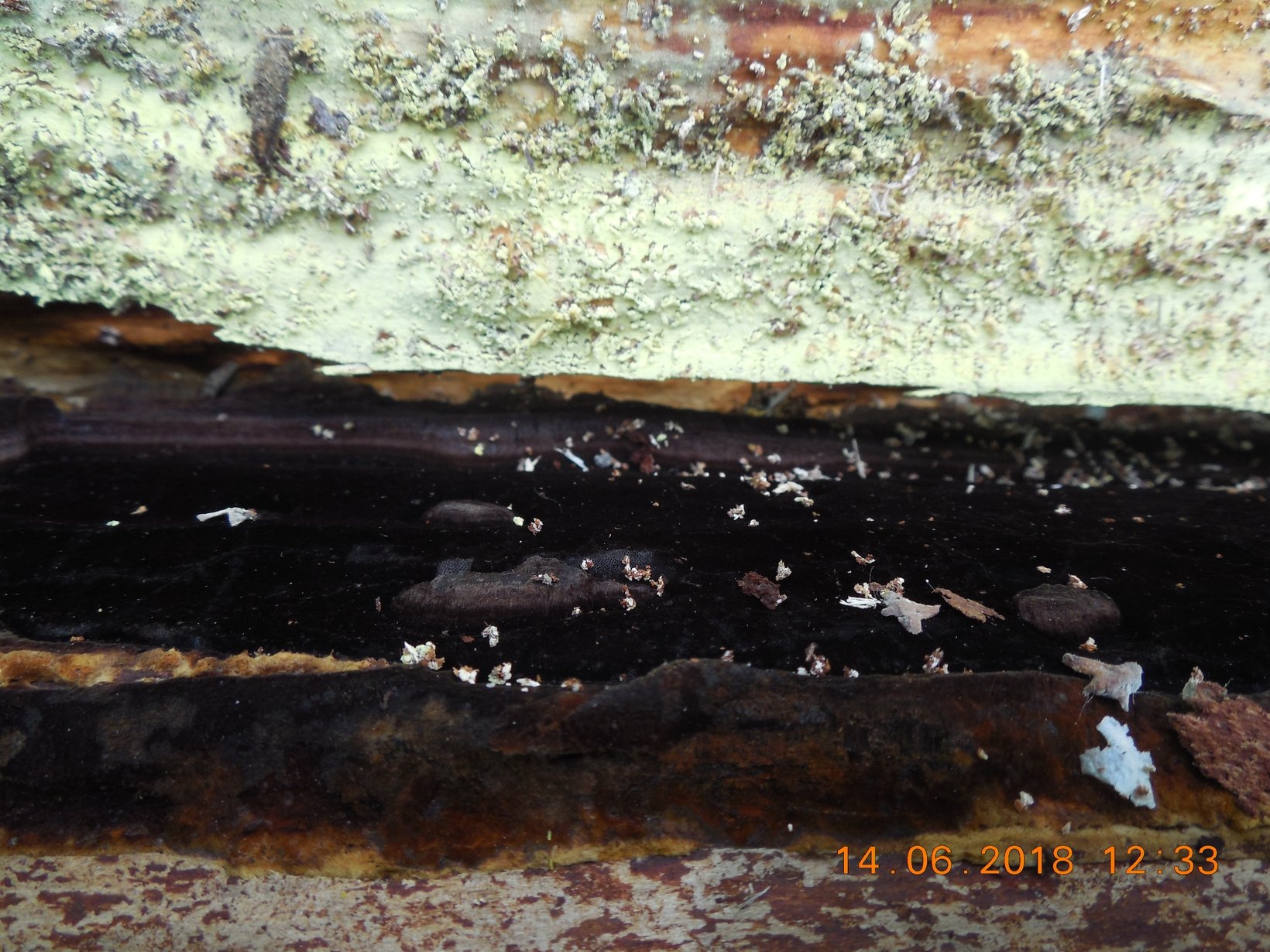
Shamelessly, with great appetite, the rust mushrooms ate the rosehip bush.
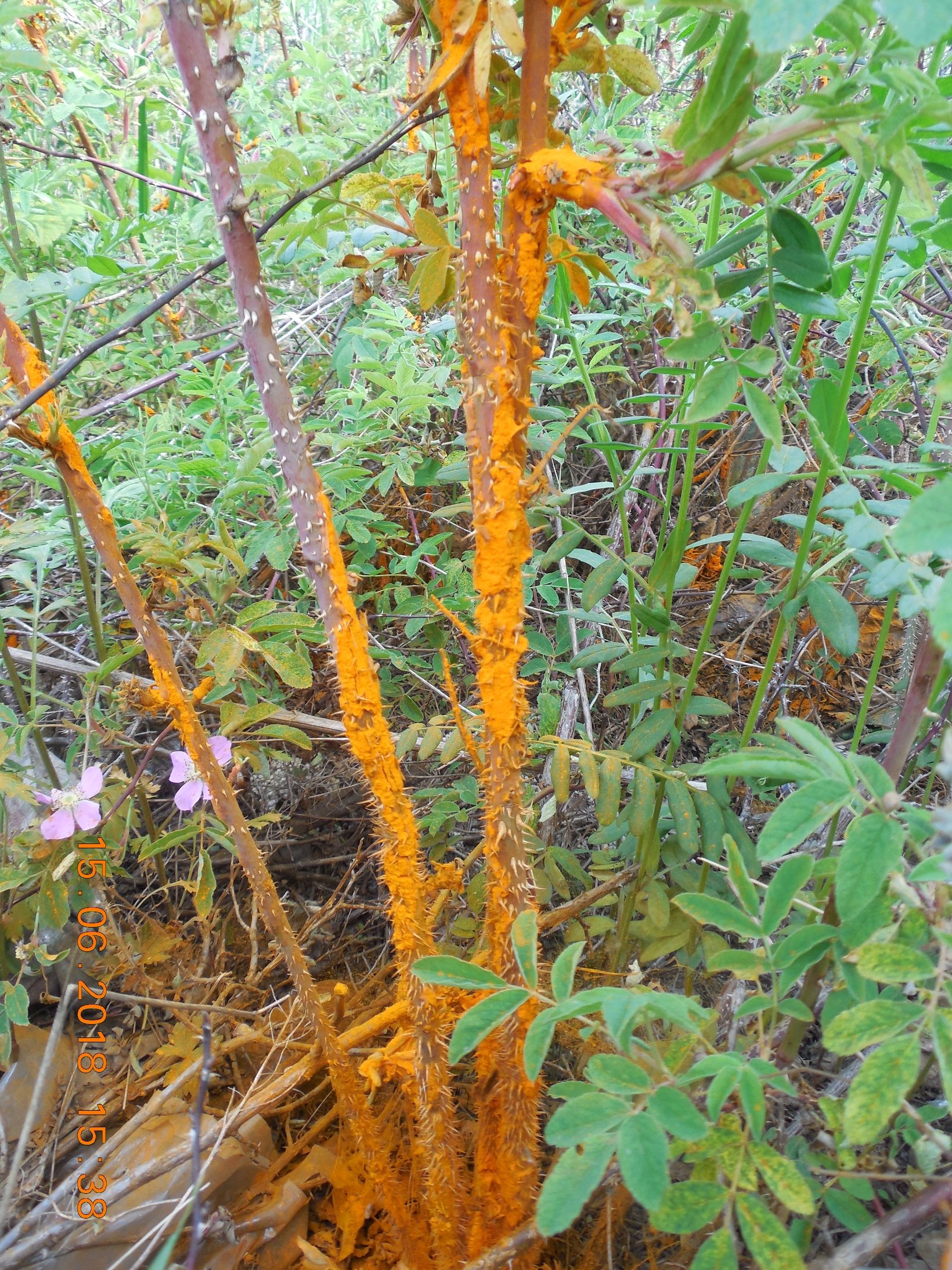
Well, yes, phytopathology is a separate topic, for an amateur.
Nevertheless, no matter how numerous polypore fungi are in the forest of Akademgorodok, no matter how abundantly they are inhabited by beetles, I would like to meet agaric fungi, classic, with a hat, a leg and, best of all, with a lamellar hymenophore. Although, of course, I love all mushrooms no less than my Gyrophaena s.str.
The first agaric I encountered was Lentinus fulvidus on the trunk of a dead aspen.
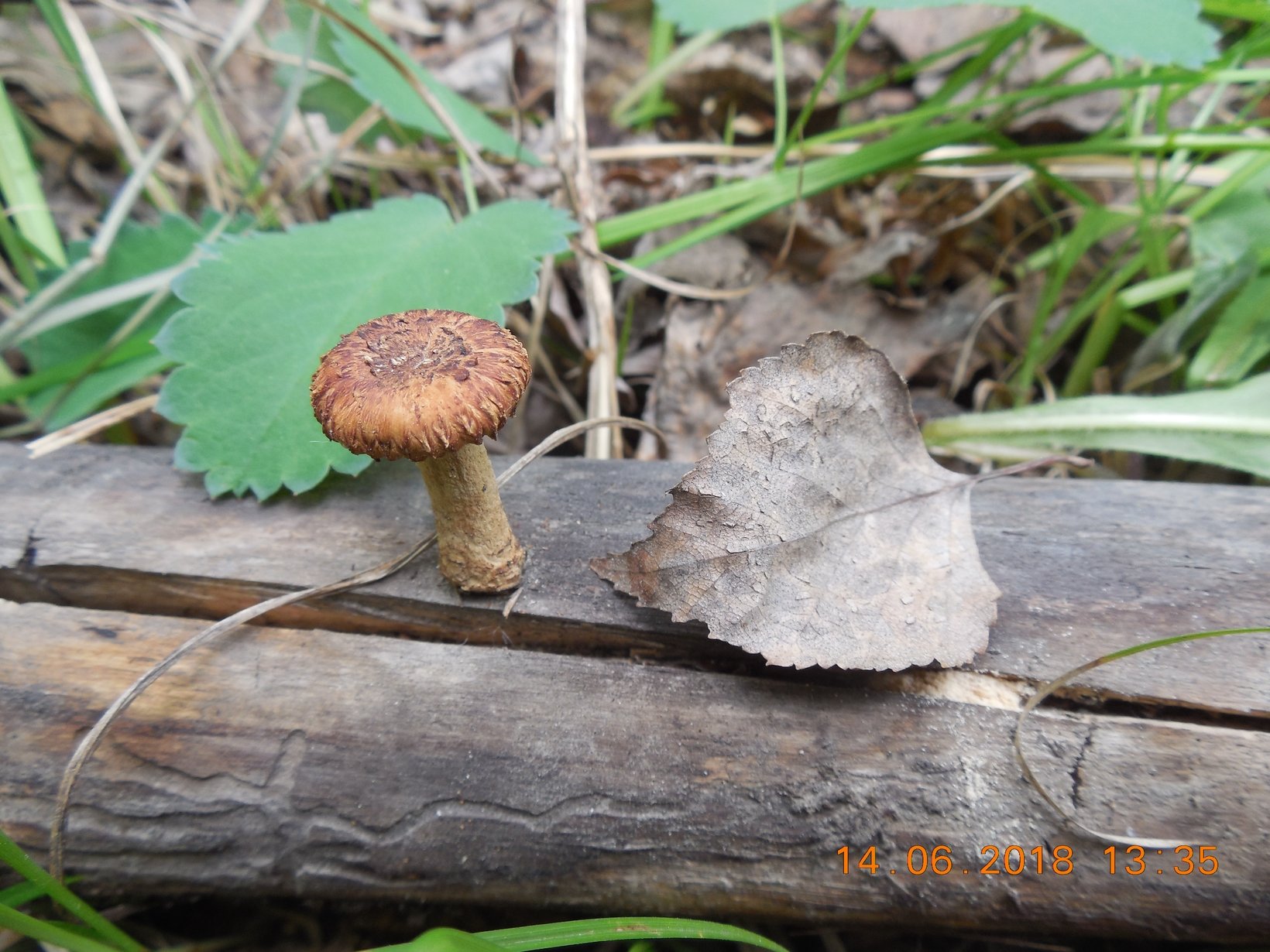
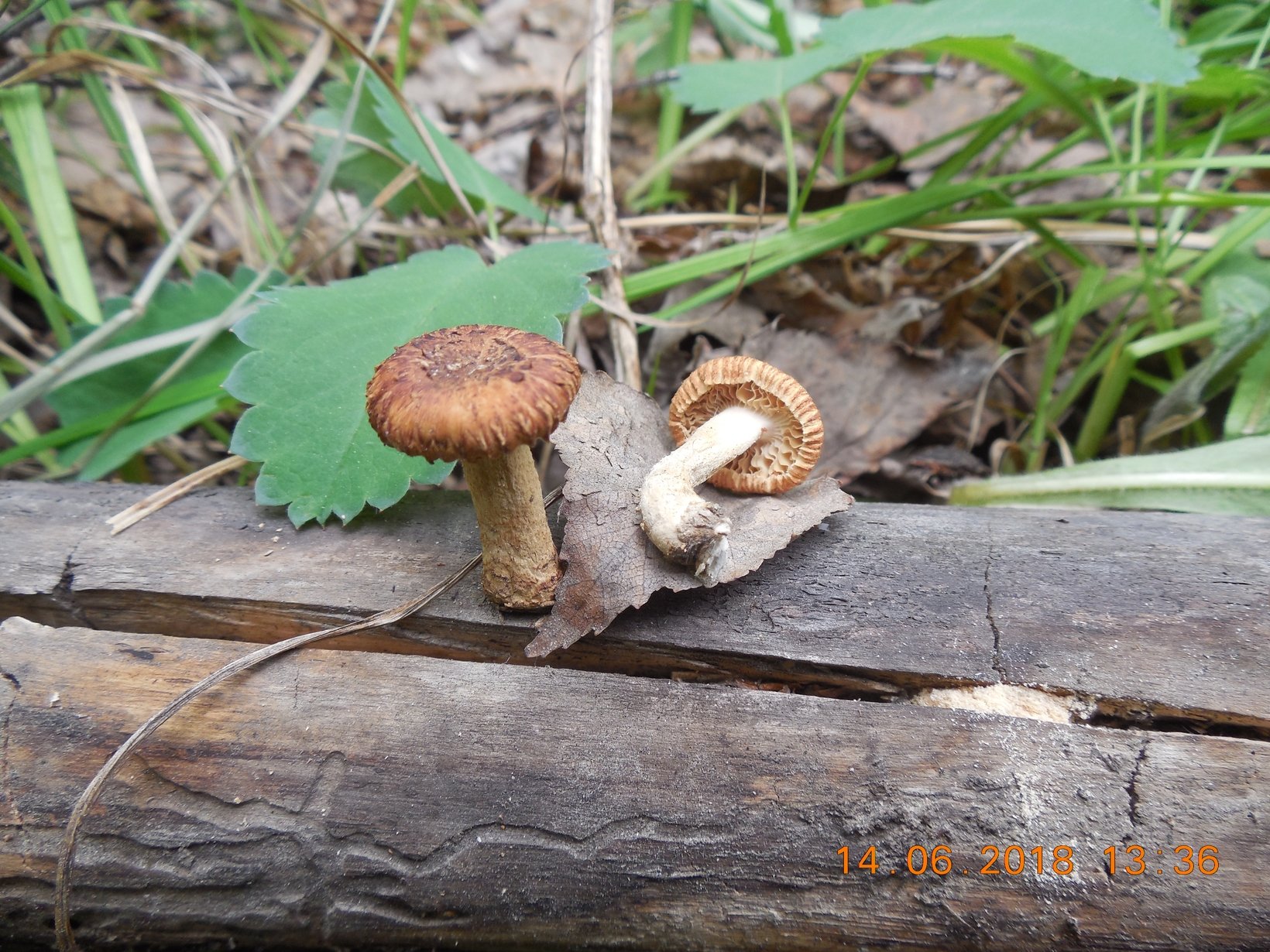
This is the smallest of the spatulas. The author of the monograph on the genus Lentinus – Pilat – rushed about with him, that with a decommissioned sack, considering him a rare species. Of course, at that time there were still single finds of this species somewhere in the mountain broad-leaved forests – an oak there, a hornbeam … The fungus has established itself as an obvious nemoral species. Therefore, when Lentinus fulvidus was found on the territory of the Irkutsk region, it was immediately put into all regional Red Books. Now it becomes obvious that it is not so rare. Moreover, in places it is found such where any “self-respecting” mushroom will not grow. There was a find in the Bodaibo district on a burnt, procreated sleeper, in some landfill – a mushroom, as if it specifically selects places with a high anthropogenic load. Apparently, this is also a matter of interspecific competition, or rather, its absence. A holy place is never empty. Here, too, any landfill that has not been mastered by anyone is being mastered by interesting, rare (in the wild) mushrooms with low competitiveness. By the way, there has long been such a trend that all the most “Red Book” “shoots” somewhere in the parks in the city center, along roadsides, in cemeteries, lawns and city dumps.
I came across quite a few fruiting bodies of Lentinus fulvidus, but all of them are very small, they grow separately … It is clear that there were few beetles on them. Although, as they say: “the spool is small, but expensive.” Further long searches brought small results in the form of a couple of mushrooms from Tricholomotaceae, boletus,

a couple of lines and some other small marsupial on the trunk of a dead birch.
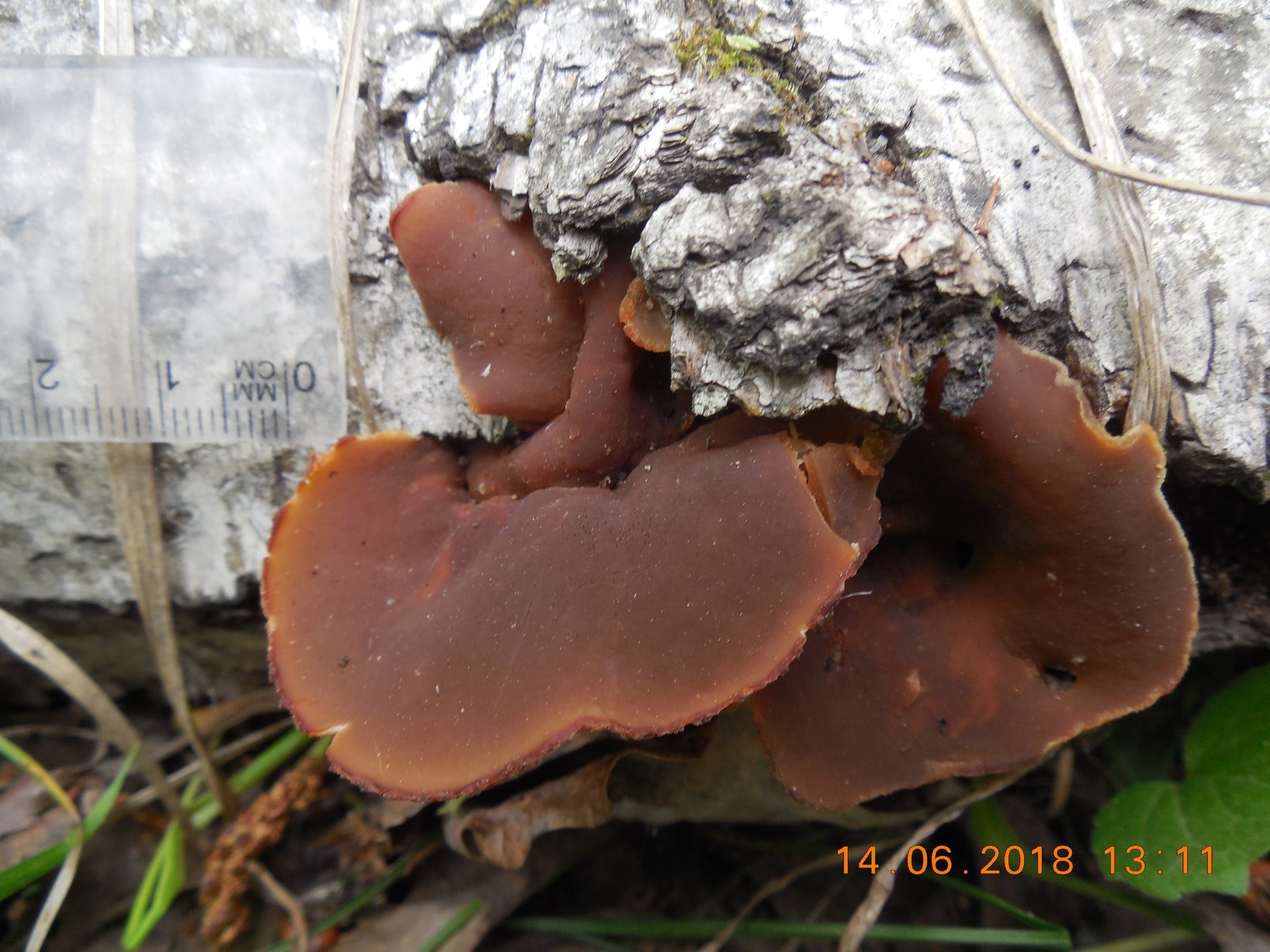
And my bugs did not settle in any of them, as if it were a sin. Now – wood-destroying mushrooms for them – the best option. It hardly needs to be said that every tree in a forest, living or dead, is the center of an ecosystem. A tree, regulating the regime of heat and moisture and thereby forming a special microclimate, creates a habitat for a large number of living organisms that settle in it, on it, in its neighborhood or visiting it at certain periods. The litter saprophytes will be populated by my beetles later, when these mushrooms flourish.









